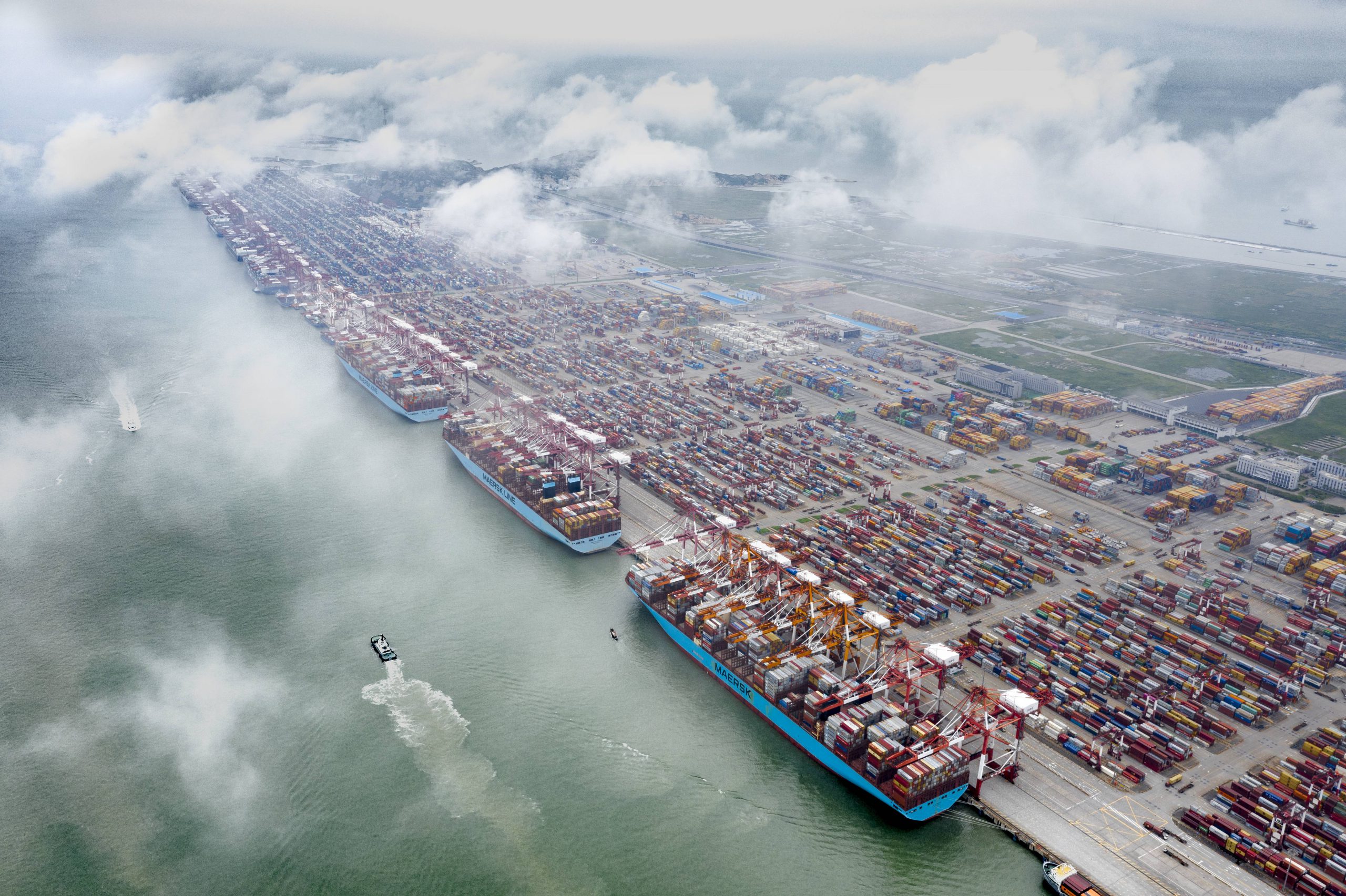BIMCO: Container shipping volume will increase by 1.5% in 2023, reaching 185 million TEUs in 2024

- Date: Jun 05, 2023
- Comments: no comments
- Categories: News
-Demand side-
BIMCO predicts that under the base scenario, global container shipping volume will increase by 0.5% to 1.5% in 2023 and 5.5% to 6.5% in 2024. Based on this, by 2024, the container sea freight volume will reach approximately 185 million TEUs.
The traffic volume in the first half of 2023 will show negative growth, as the outbound and regional routes have not yet recovered from the weakness that began in the second half of 2022. It is expected that the transportation volume and growth rate will recover in the second half of 2023.
It is expected that by the end of 2024, the total volume of major outbound and regional routes will be approximately 7% higher than in 2022. The return route traffic volume has shown negative growth for three consecutive years, but it will resume growth in 2023 and 2024, with the traffic volume in 2024 being approximately 5.5% higher than in 2022.
However, there is still uncertainty about when the market will recover. Under the low scenario predicted by BIMCO, the market downturn will continue until 2023, and a recovery will begin in 2024.
In this scenario, by the end of 2024, the global container shipping volume will be approximately 3.5% lower than the base scenario. By the end of 2024, the volume of outbound and regional routes will be nearly 5% lower than the base scenario.
However, downside risks still exist. The International Monetary Fund predicts that in a low scenario, tightening financial policies may lead to economic growth rates dropping to 2.5% and 2.8% in 2023 and 2024, respectively. Developed economies may be more negatively affected, especially the United States, the European Union, and Japan, with growth rates in 2023 expected to be 0.4% lower than the base scenario. Economies with close ties to the United States, such as Mexico and Canada, will face greater risks of economic slowdown.
The situation in the manufacturing industry is significantly lower than normal. Since September 2022, the global manufacturing PMI (Purchasing Managers’Index) has remained depressed, reaching 50.0 only once, indicating that manufacturing activity is declining.
The consumer situation seems to have improved. Compared with the level before the outbreak of COVID-19, the unemployment rates in the United States and the European Union are very low.
The retail sales in the European Union and the United States have remained stable, with the latest sales only 5% and 3% lower than the peak in 2021. However, the trend is slowly declining, and consumer sentiment in these two regions remains sluggish.
In the first quarter of 2023, North American import volume decreased by 21% year-on-year, and the inventory/sales ratio of all sectors has been approaching pre pandemic levels, indicating that inventory growth is faster than sales. In many countries, high inflation, rising interest rates, and financial tightening remain challenges for consumers and businesses. Especially in the United States, if the Federal Reserve raises interest rates significantly, it may lead to a “hard landing” of the economy, which will have a negative impact on other countries and regions.
Therefore, it is difficult to determine whether the import volume of North America and Europe can recover in the second half of this year. The box volume in the first quarter of 2023 decreased significantly year-on-year, lower than the level in the first quarter of 2019, with only a slight increase in box volume on outbound and regional routes.
The box volume performance in South Asia, West Asia, Latin America, and Africa is relatively optimistic, with a growth of 6.9% in the first quarter of 2023 compared to the first quarter of 2019 and a growth of 4.3% compared to the first quarter of 2022. But the container volume in these three regions only accounts for 23% of the total container volume.
Therefore, the performance of the three major regions of East Asia/Southeast Asia, Europe/Mediterranean, and North America is crucial for the resumption of container volume growth in the second half of the year.
-Supply side-
Due to the slower than expected dismantling process in 2023, it is expected that the growth rate of fleet capacity in 2023 and 2024 will be 7.3% and 8.0% respectively.
It is expected that 4.9 million TEUs of new capacity will be delivered in 2023 and 2024, with 900000 TEUs to be dismantled, and the global fleet size will reach 29.8 million TEUs by the end of 2024.
The current port congestion has returned to normal levels, and the pressure on the global supply chain has dissipated.
So far this year, the average sailing speed of liner ships has decreased by 0.6 knots (4%) year-on-year, with large ships experiencing a decrease of 1.0 knots (7%). Recently, the 2M alliance has taken the lead in taking measures to adjust its capacity deployment based on lower speeds. Starting from June, the alliance will further reduce the speed of its Asia Europe route and add 9 ships to its 8 route services.
It is expected that congestion alleviation will increase fleet efficiency by 6% in 2023, while a decrease in speed will result in a 5% decrease in fleet efficiency in 2023 and a further 5% decrease in 2024.
In summary, it is expected that the global container transport capacity supply will increase by 8.3% in 2023 and 3.0% in 2024.
-Conclusion-
BIMCO predicts that the supply and demand balance in the container transportation market will significantly deteriorate in 2023 and improve in 2024. During this period, the supply and demand relationship will be lower than the level in 2019.







No Comments Yet.